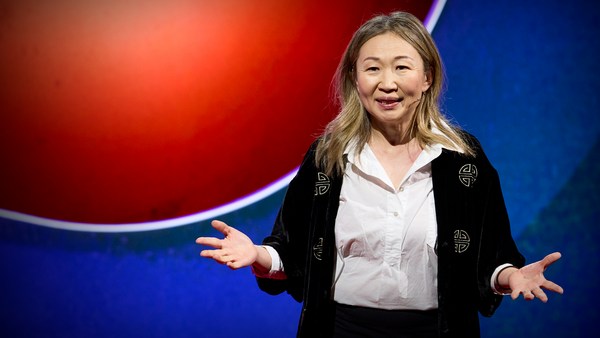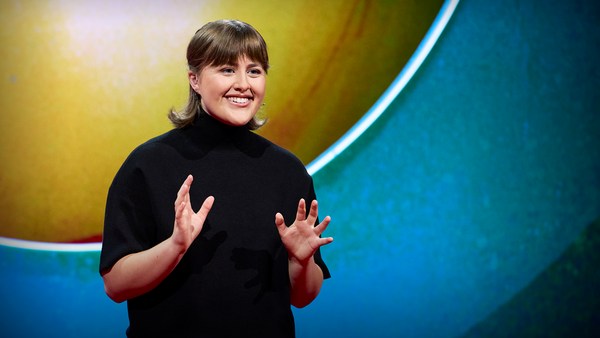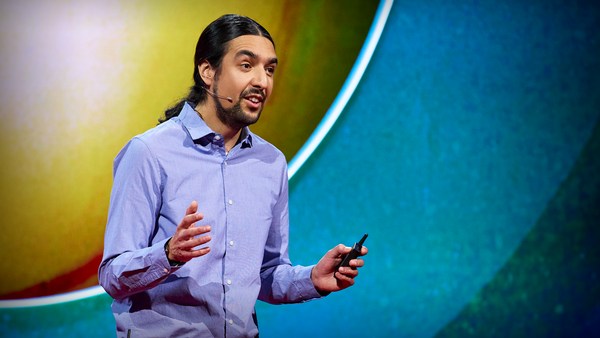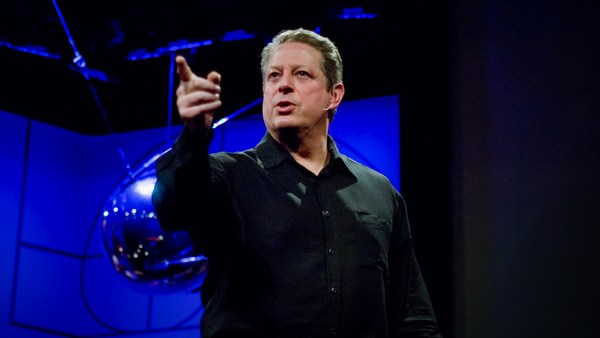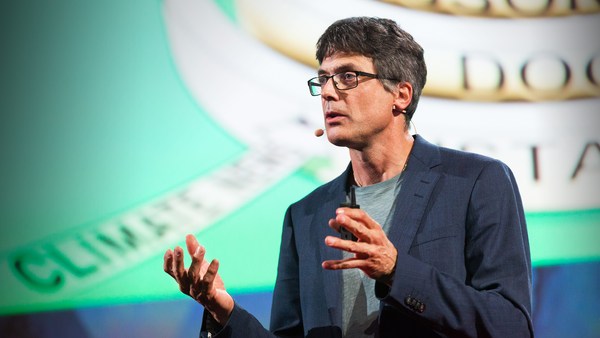When you see the ideal climate movement, what do you imagine? When I imagine the ideal climate movement, I see a house of many rooms. Each one of us can have a room inside that house, and while each of the rooms can be a different shape and size, all the rooms are essential to making up the overall edifice of the house of the movement. This is how I've been thinking about the climate movement ever since I joined the United Nations in the lead up to the Paris Agreement. My boss, Christiana Figueres, used to describe the Paris Agreement as like a house of many rooms. The governments, the businesses, civil society, they all had a room in the Paris house. That's what made Paris succeed in the moment.
But recently, it's like our movement has started to live in separate houses. And this is leading to a fragmentation when we can afford it least. Remember 2019, when four million people took to the streets across 4,000 cities to march on climate in a single day? Last year, the figure was 70,000. We are forgetting our own potential for mass collective action on climate.
I think we need to rebuild the house of many rooms. But what kind of a house do we actually need to truly take on the climate crisis? Well, we're going to need a much bigger house. We're going to need a house that builds trust, and we're going to need a house that actually brings inside the artist to inspire us, to spice things up a little bit.
So when I imagine this house, I like to imagine a vast 100-room structure, like the Alhambra Palace in Spain, where different beliefs clashed and cooperated throughout the ages. Because actually, the primary challenge our movement faces is in allowing different beliefs, different mindsets, to coexist under the same roof.
We've got the realists, and the realists say we are rapidly hurtling towards negative planetary tipping points, with every year hotter than the last, with rising sea surface temperatures making the hurricanes we're experiencing right now twice as likely, and with a crazy surge in oil and gas exploration that is leading to another 12 billion tons of emissions.
But then there's the optimists. And they say, hang on a second. We're actually hurtling towards positive climate tipping points. In energy, we added 50 percent more renewables capacity last year than the year before. In electric vehicles, one in five car sales was electric last year. Four years ago, it was one in 25. In batteries, sales are doubling every two to three years, which is wiping out half of fossil fuel demand.
The realists and the optimists are obviously both correct. It’s when we start embracing and housing both of them simultaneously that we root ourselves in the reality, the realism of where we’re at but leave ourselves defiantly optimistic in our ability to unleash change. We start being able to take head on oil and gas’s attempt to gaslight us, what I call oil-and-gaslighting. We start renewing our agency to act.
So I saw this happen at the UN climate negotiations in Dubai. By this time I've left the UN. I'm climate campaigning. And in Dubai, the world expected governments to signal the end of the fossil fuel era. But as we got into the second week, the outlook was not looking great. We decided to convene a group of realist scientists, optimistic businesses and activists in a movement that wasn't ready to give up. We did media, advertisements, social content. We sent countless emails, made a lot of phone calls. We ended up crafting a letter to the president of the negotiations, clamoring for a phase out on fossil fuels, which in under 48 hours got 800, then 1,000, then 2,000 signatures.
And as all of this was happening, I was called into a private office only to find the COP president himself. And he said, "Hello, Matthew, I know what you're doing."
And I thought, "Shit. He knows what I'm doing. I am in such trouble."
But he said, "I know what you and your partners are doing, and I want you to know we support it."
And I realized that when you start creating the places, the spaces where everyone can participate without finger-pointing, you start to connect and collaborate on an entirely new dimension. After that, we were getting spoken about by the negotiators. They would text us and say, "Hey, please keep the pressure up." When the hammer finally came down on the last day of the negotiations, governments agreed to transition away from fossil fuels. Not perfect, sure, but the first time fossil fuels had ever been mentioned in a UN climate text. And while we knew our effort was only ever a small part of the overall success, we also felt like we were tapping into this collective energy that was greater than the sum of the individual parts.
But before I get completely carried away, this house that we're building for our climate movement obviously needs to stretch way beyond these formal climate negotiations. There have been nearly 30 of them, after all. And it needs to be a house where we build trust, where those inside it are honest. And we particularly need trust from those big organizations that make up the global economy. So before Dubai, I helped to create the world's largest climate coalition in a campaign called Race to Zero. It’s got 15,000 organizations now, covering two-thirds of the global economy, and they've all set their sights on halving emissions by 2030 and getting to zero by 2050. And that's promising. But simply having a bigger house is not enough on its own. Some of these organizations are struggling to meet that goal. Some of them are pulling back, going quiet or being unable to ask for help. And this is leading to a breakdown in trust, which threatens to pull our movement down from the inside. If we don't have trust, if we don't have truth, our movement is nothing. And I would say exactly the same about art. Without art, we're nothing.
So I want to return to that image of the Alhambra up on the hill. Because the Alhambra is all about the art. Its design owes as much to poets and philosophers as it does architects. And like the Alhambra, our movement needs to bring inside the artists. Artists have inspired paradigm shifts on issues like race and sexuality. Think of David Hockney painting queer life when it was still illegal. Or Billie Holiday singing a song like "Strange Fruit" a quarter of a century before the US Civil Rights Act. Or less profoundly, just think of Harry Styles getting photographed on an electric bike. Viral. The point is, artists have the power to awaken the public consciousness for mass climate action.
That's how we build the climate movement of the future. A house of many rooms where each one of you is welcome to have a room inside, the realists and the optimists among you. Where we build trust with one another, including on the laws we need to meet our goals. And where we also start inviting inside the artists to inspire us all in a movement of possibility for the best house party of all time.
The thing is, we know that four in five of us, globally, all want climate action. We're already the 80 percent. We just don't know we know it yet.
Thank you so much.
(Applause)
